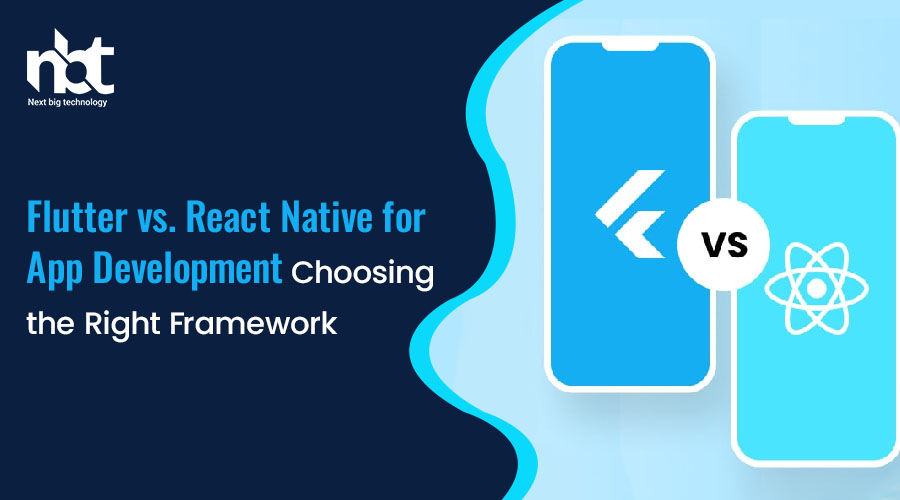Table of Contents
Introduction
In the vast landscape of app development frameworks, the choice between Flutter and React Native is a crucial one. The success of your app not only depends on its features and functionalities but also on the efficiency of the development framework employed.
Flutter: A Deep Dive
A. Introduction to Flutter
Flutter, developed by Google, is an open-source UI software development toolkit. It is renowned for its ability to create natively compiled applications for mobile, web, and desktop from a single codebase.
B. Key Features of Flutter
Flutter boasts a rich set of features, including a hot reload for faster development, expressive and flexible UI, and native performance.
C. Pros and Cons of Using Flutter
Pros
- Single codebase for multiple platforms
- Fast development with hot reload
- High-performance native applications
Cons
- Smaller community compared to React Native
- Limited third-party libraries
D. Real-world Examples of Successful Flutter Apps
Apps like Alibaba, Google Ads, and Reflectly have achieved success using Flutter, showcasing its capabilities in diverse industries.
React Native: Unveiling the Potential
A. Introduction to React Native
Developed by Facebook, React Native is a popular open-source framework for building cross-platform mobile applications.
B. Key Features of React Native
React Native is renowned for its flexibility, allowing developers to build applications for iOS and Android using a single codebase.
C. Pros and Cons of Using React Native
Pros
- Large and active community
- Extensive third-party library support
- Quick development with hot reload
Cons
- May require native modules for complex functionalities
- Potential performance issues in large-scale applications
D. Real-world Examples of Successful React Native Apps
Apps like Facebook, Instagram, and UberEats have leveraged React Native’s capabilities to create high-performance, visually appealing applications.
Technical Comparison
A. Language and Syntax
Flutter uses Dart programming language, while React Native uses JavaScript and React. The choice may depend on the development team’s expertise and project requirements.
B. Performance and Speed
Flutter, with its compiled code, tends to offer better performance compared to React Native, which relies on a JavaScript bridge for communication.
C. Community Support and Documentation
React Native enjoys a larger community, resulting in extensive documentation and a wealth of third-party libraries. Flutter, while growing, may have fewer resources available.
D. Integration Capabilities
Both frameworks support integration with native modules, but React Native’s seamless integration with existing native code sets it apart in certain scenarios.
User Experience: A Critical Aspect
A. Flutter’s UI/UX Capabilities
Flutter’s widget-based architecture allows for highly customizable and visually appealing UI, contributing to an excellent user experience.
B. React Native’s UI/UX Capabilities
React Native’s component-based UI also offers a solid user experience, with the advantage of using native components for a more authentic feel.
C. Case Studies on User Experience
Analyzing case studies of apps developed with each framework provides insights into the practical implications of their UI/UX capabilities.
Popularity and Adoption
A. Market Trends and Statistics
Examining current market trends and usage statistics helps gauge the popularity and adoption rates of Flutter and React Native.
B. Industry Preferences and Case Studies
Understanding the preferences of leading industries and examining case studies provides valuable insights into the real-world application of each framework.
C. Developer Community Insights
Considering the perspectives and experiences of the developer community can shed light on the strengths and weaknesses of each framework.
Decision-Making Factors
A. Project Requirements and Scalability
The nature and scope of your project play a pivotal role in determining whether Flutter or React Native is better suited for your development needs.
B. Development Time and Cost Considerations
Factors such as time-to-market and development costs are crucial considerations that may influence your framework choice.
C. Developer Skillset and Familiarity
The expertise of your development team and their familiarity with either Dart or JavaScript can heavily impact the efficiency of the development process.
D. Future-proofing the App
Considering the long-term viability and support for each framework ensures your app remains relevant and up-to-date in the ever-evolving tech landscape.
Case Studies: Success Stories
A. Highlighting Apps Built with Flutter
Examining successful apps developed with Flutter showcases the versatility and capabilities of the framework in real-world scenarios.
B. Showcasing Apps Developed with React Native
Similarly, exploring apps developed with React Native provides concrete examples of its effectiveness in various applications.
C. Analyzing the Success Factors
Identifying common success factors in these case studies helps distill key considerations for your own project.
Challenges and Solutions
A. Common Challenges in Flutter Development
Acknowledging challenges such as a smaller community and limited third-party libraries prompts the need for effective solutions.
B. Common Challenges in React Native Development
Likewise, addressing challenges like potential performance issues and reliance on native modules ensures a smoother development process.
C. Strategies to Overcome Challenges
Implementing strategies to overcome challenges ensures a more robust and successful development experience with either framework.
The Developer’s Perspective
A. Feedback and Opinions from Flutter Developers
Gaining insights from developers who have hands-on experience with Flutter provides valuable perspectives on its strengths and limitations.
B. Feedback and Opinions from React Native Developers
Likewise, understanding the experiences of React Native developers offers a comprehensive view of the framework from a practitioner’s standpoint.
C. Comparative Analysis Based on Developer Insights
A comparative analysis of developer feedback aids in forming a nuanced understanding of how Flutter and React Native align with real-world development scenarios.
Making the Choice: Decision Matrix
A. Creating a Decision Matrix for Framework Selection
A decision matrix, weighing factors like performance, community support, and development speed, assists in making a well-informed choice.
B. Weighing the Pros and Cons Based on Project Requirements
Aligning the pros and cons of Flutter and React Native with your specific project requirements guides you toward the most suitable framework.
Industry Trends and Future Outlook
A. Emerging Trends in App Development Frameworks
Exploring emerging trends in app development helps anticipate the future trajectory of both Flutter and React Native.
B. Predictions for Flutter and React Native
Expert predictions and industry insights provide a glimpse into the potential future developments and advancements in both frameworks.
Conclusion
A. Recap of Key Points
Summarizing the key points discussed aids in reinforcing the critical considerations for choosing between Flutter and React Native.
B. Encouragement to Make an Informed Decision
Empowering the reader to make an informed decision based on their project requirements and preferences concludes the comparative analysis.
Thanks for reading our post “Flutter vs. React Native for App Development: Choosing the Right Framework”. Please connect with us to learn more about Flutter vs. React Native.
























